Time Travel Through the Jewish Quarters of Spain -via Google
The client
Google as a company needs no introduction. With more than 100,000 employees and a ubiquitous presence in the market, its services include the most used search engine in the world, video, mail, geolocation, cloud services, advertising and many more. Google is one of the pillars of the Internet as we know it.
We have teamed with Google from 2011 to 2015 on projects for the web and mobile exploring the possibilities of the Google Maps platform.
Services provided
- Digital consultancy
- Technical Architecture
- Graphic design (UI)
- User Experience design (UX)
- Web Development
- Programming
- Documentation work
- Copyrighting
- Beta-testing
The proyect is online in:
www.redjuderias.org/google/?l=en.
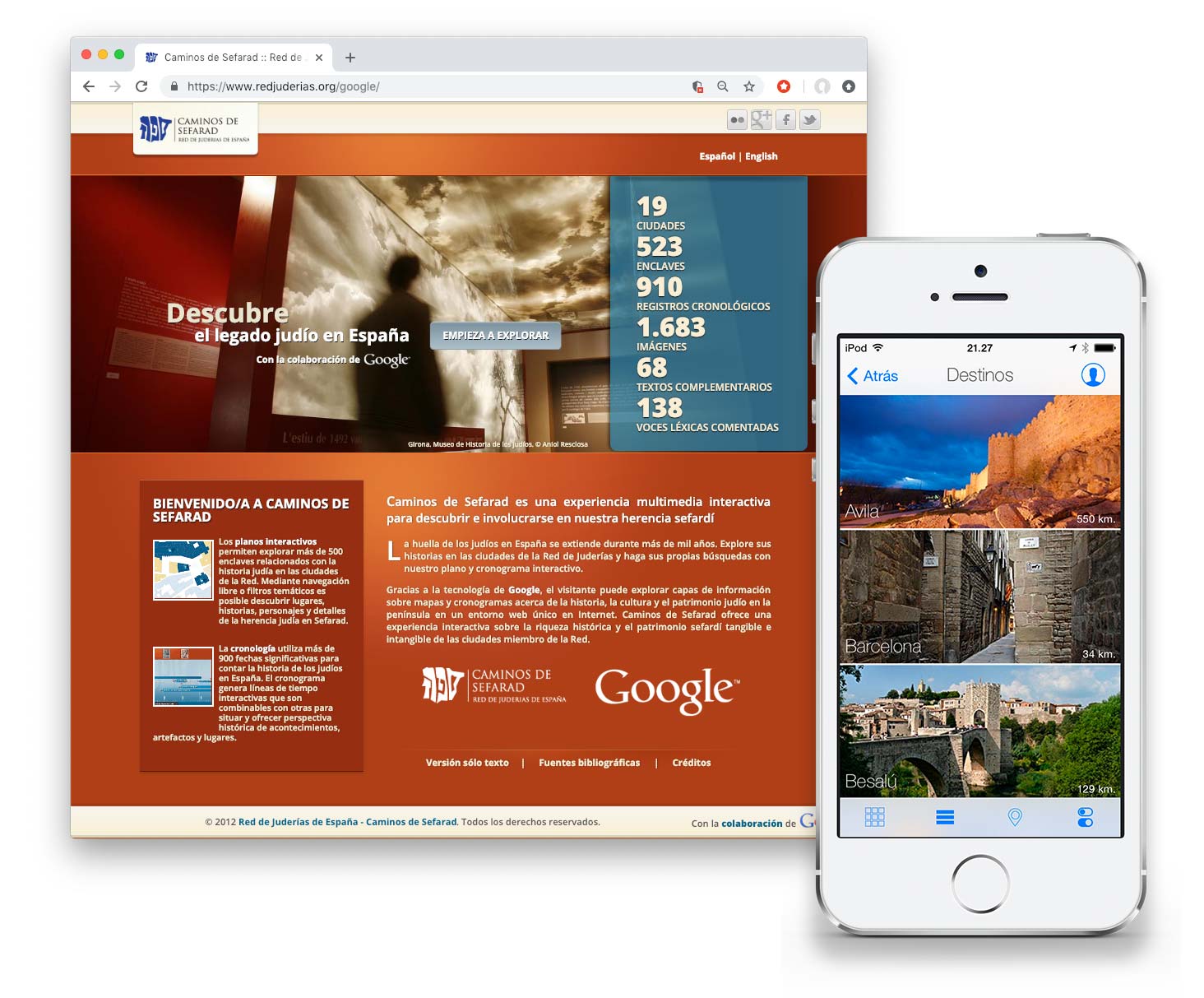
A global project
Google wanted to create a pilot project to geolocate historical informative assets on the Google Maps platform.
Fluido Digital was in charge of designing the project, delimiting its scope, creating the user interface and using Google tools to develop useful, easy-to-use and high-value-added applications.
A bird's eye view
The main purpose was to showcase the importance of the historical Sephardic heritage by squeezing the possibilities of Google technology.
Managing such a large volume of information was not an easy task, especially because its sources were uneven and poorly organized.
Our approach was to unify and complete the sources and use Google Maps and Google Street View to display it in a homogeneous and structured way in layers of information. The result is an application with a non-intrusive design where content is contextualized in its original location and is related to similar points of interest in other cities.
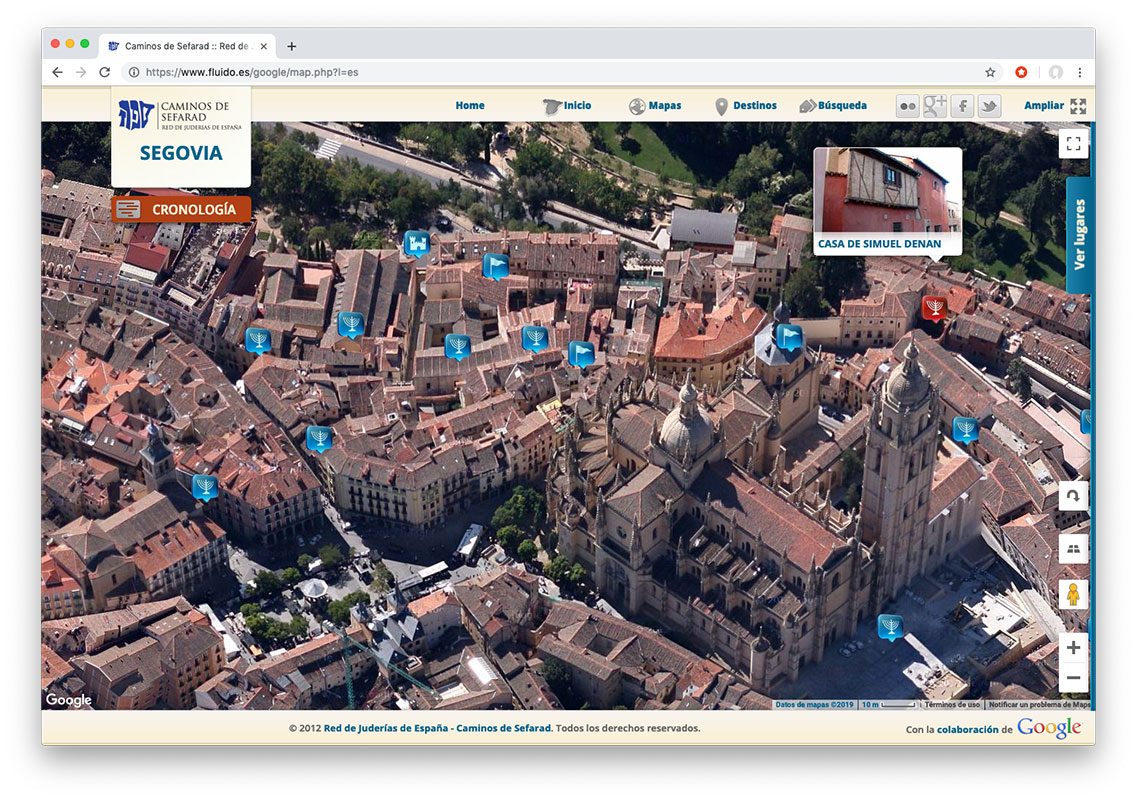
“We have had the best partners. They have used Google’s tools, even better than many Google engineers. They have done an unbelievably great job”.
William Echikson, Google Europe.Simplifying navigation
In the iOS and Android version, we emphasize the aspects that are really important for a mobile user.
Nowhere is this effort more apparent than in the simplified app navigation, based on a linear and intuitive pattern, in which the users decides how and how much information they need and the application fetch it in a segmented way according to their interests. The toolbar at the bottom focuses the basic viewing options. The other options are intelligently displayed according to the user's geolocation.
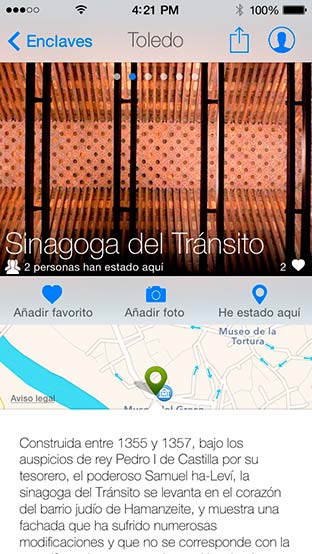
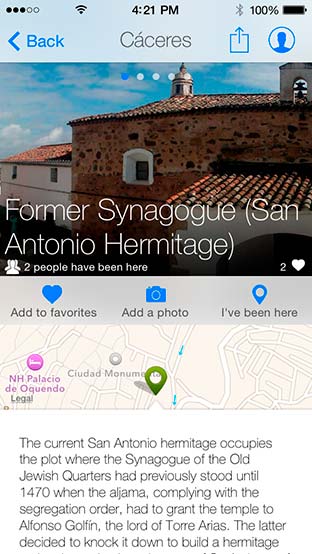
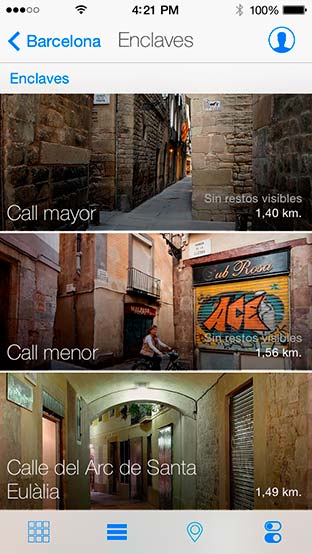
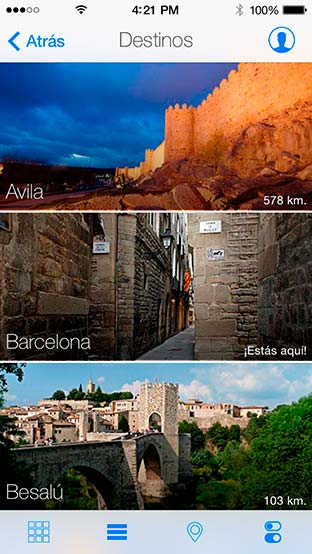
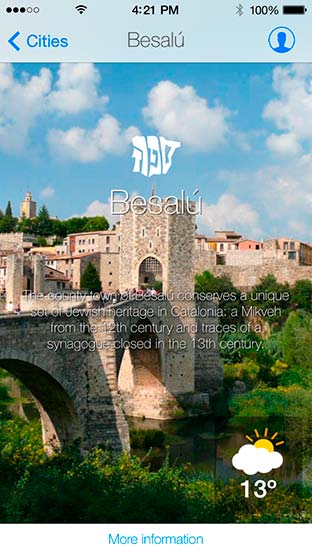
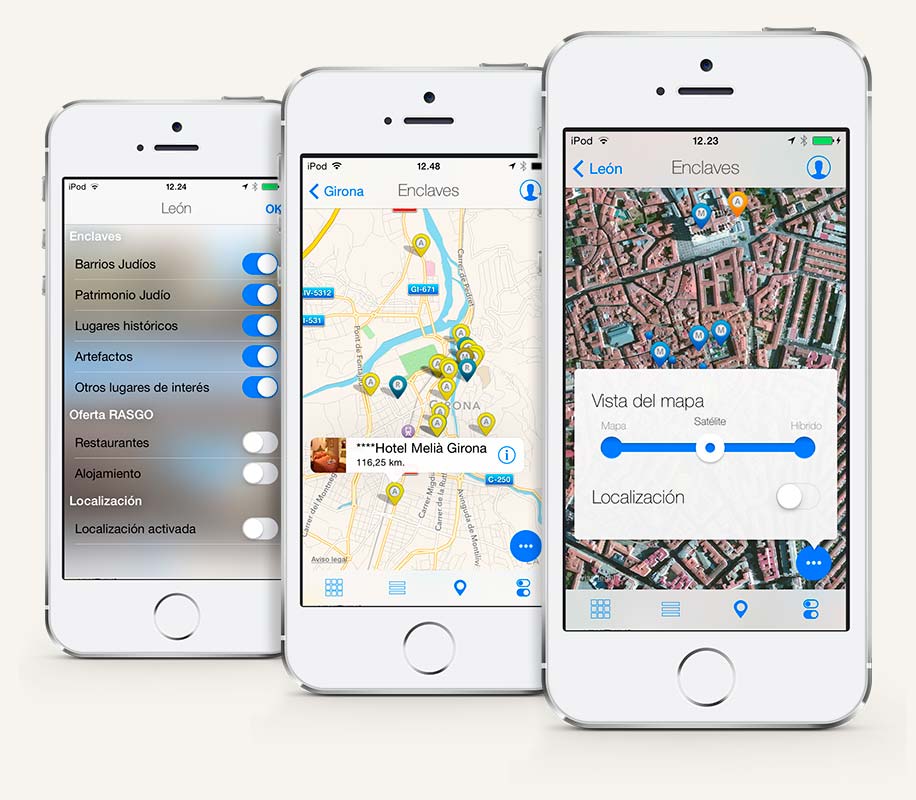
Take the route in your pocket
Mobile applications have to be useful for users who want to know first hand the heritage of a city.
Our approach was once again simplification: to put first the most relevant tools for the traveler and let him decide the amount and type of content he wants to receive.
Maps
The goal of the site design was to create an immersive experience that presents the events surrounding Sephardic history in a way that is both educational and evocative.
Maps and chronologies guide visitors through cities and their selected points of interest.
The visitor’s ability to change time (in timelines) and location selections (in maps) to recreate a historic event demonstrates how interactive technology can be used to both educate and engage people as active participants in a historical narrative.
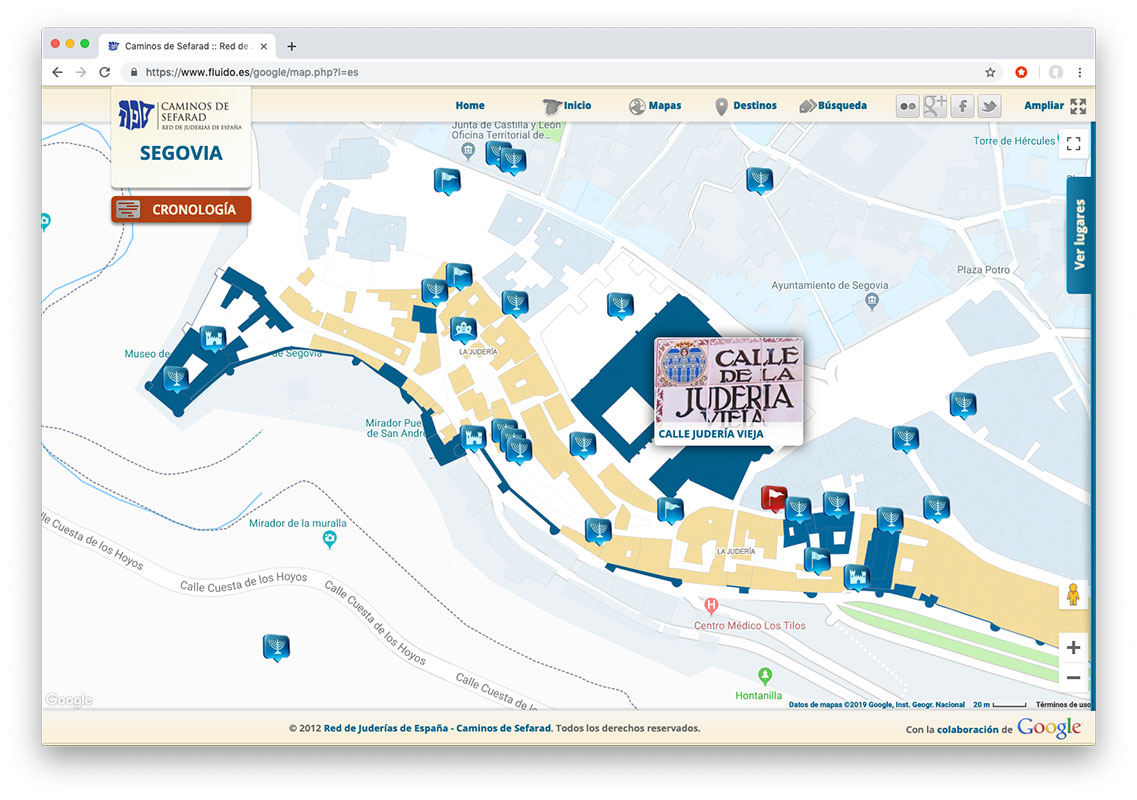
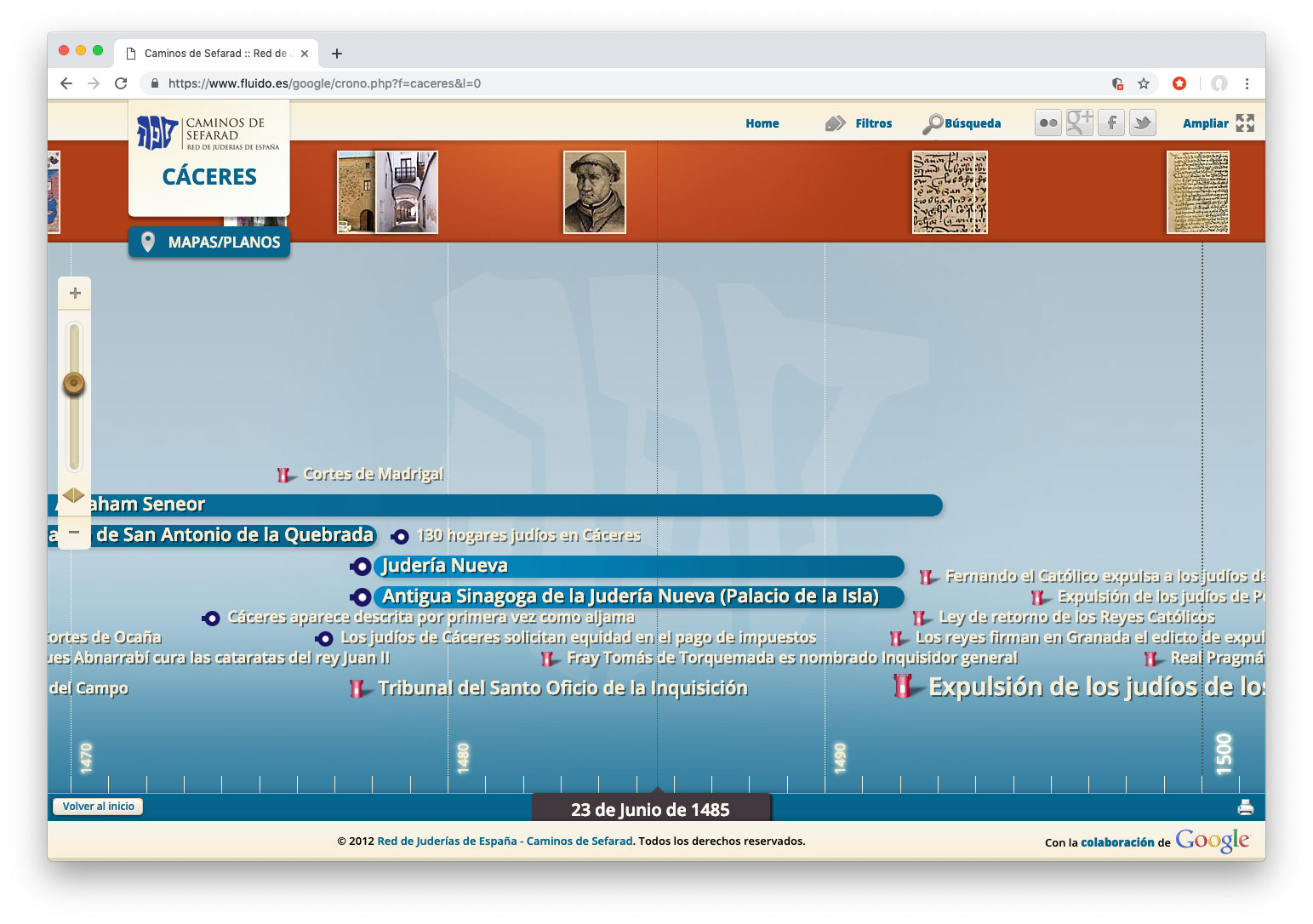
Timelines
The Chronologies build interactive timelines that create historical webs of ideas, events, and places with over 900 records.
As in the maps, visitors can customize the presentations by focusing time parameters, by selecting from dozens of tags or topics, or by filtering items on the timeline according to cities, categories or keywords.
All the elements of the timelines are interactive. Relationships between items on the timeline are displayed when multiple tags are selected and records coalesce along thematic bands in the interface.

Press cippling
And Now, via Google, Time Travel Through the Streets of Segovia. The New York Times, Doreen Carvajal. January 15th, 2013.
I have never been to Segovia, but the new Web site took me on a haunting stroll to a street framed by stone walls called Martínez Campos. It was the site of the Campo synagogue – built and paid for in 1456 by Elvira González, although she was then a convert. Nothing remains of the building.
Google helps brings lost Jewish Spain to life. The Jerusalem Post, Marion Fishel, December 18th, 2012.
Descubre y conoce el patrimonio judío de España en Internet. Blog Oficial de Google España, Bill Echikson, December 24th, 2012.
Patrimonio judío a golpe de ‘clic’. El País, December 24th, 2012.
Las ciudades y barrios judíos son, cada vez más, un reclamo turístico para los viajeros y habitantes de enclaves en los que la herencia sefardí ha dejado huella, sobre todo en forma de cultura, costumbres, monumentos y otras disciplinas artísticas. Un legado que se remonta a más de mil años atrás y que tiene un alto valor para la sociedad española.
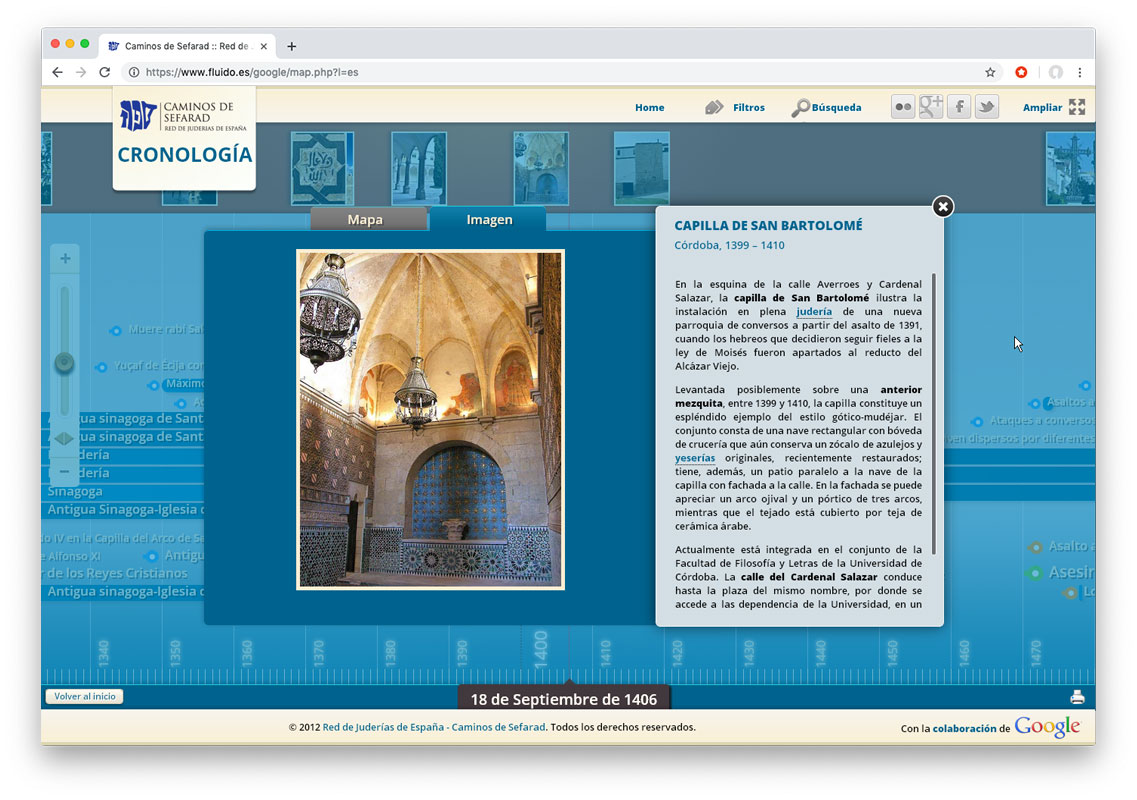
“[This project] opens panoramas of knowledge – and we all know knowledge is the cornerstone of tolerance and living together. To recover part of Spain, which must be made known. To complete the image of Spain. Not only for Jews. To rehabilitate, or recompose in a way, some sort of historic mistake”..
José Angel Lopez Jorrin, General Manager. Spain Brand.Looking forward
ResultsWe’re thrilled with the work that we’ve been able to accomplish together with Google. The website and mobile apps not only accomplished both our goals and theirs, but exceeded expectations. Through a robust content management system is is possible to continue to add records in the future in order to expand the storytelling capabilities of the project.
En Fluido Digital we are very happy to be the inspiration for other Jewish heritage mapping projects such as the World Jewish Heritage Foundation, which has used our approach and strategy for the creation of a digital network of Hebrew cultural assets on a global scale.
